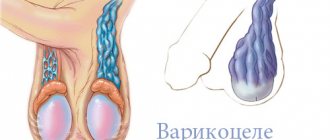What is calcium chloride
Calcium Chloride has the chemical formula CaCl2. To understand what calcium chloride is and how it works, you need to look at its properties. It has an orthorhombic crystalline molecular form. The substance turns into a hexahydrate - solid in structure, then becomes liquid. Calcium chloride is obtained under technical conditions during the production of soda or Berthollet salt. The second recipe: the interaction of hydrochloric acid and calcium carbonate or hydroxide. The powder dissolves in acetone or lower alcohols and absorbs water, cooling it.
Pharmacodynamics and pharmacokinetics
Calcium chloride - what is it?
When asked what calcium chloride is, Wikipedia answers that it is a drug that is used to treat hypocalcemia in conditions that require a rapid increase in blood .
The substance is a calcium salt of hydrochloric (hydrochloric) acid. Its formula is CaCl2. The crystal lattice of calcium chloride is ionic.
Calcium chloride - what is it?
This is another name for the drug; there is also the name “calcium chlorine”.
Pharmacodynamics
The drug helps to replenish Ca2+ deficiency, without which the process of transmission of nerve impulses cannot normally occur, muscles (smooth and skeletal) cannot contract normally, myocardial activity, the process of blood clotting, and the formation of bone tissue are disrupted.
The action of calcium chloride is also aimed at preventing the development of inflammatory reactions, reducing the permeability of cells and vascular walls, and increasing the body’s ability to resist infections. In addition, the drug significantly enhances phagocytosis (in particular, if it decreases after taking sodium chloride).
Calcium chloride administered intravenously stimulates the sympathetic division of the ANS (autonomic nervous system), has a moderate diuretic effect, and increases the release of adrenaline by the adrenal glands.
Pharmacokinetics
Approximately 20-30% of the solution taken orally is absorbed in the small intestine; the rate of absorption depends on pH, diet , the presence of vitamin D and the presence of factors that can bind Ca2+.
Absorption increases with Ca deficiency in the body, as well as when using a diet with a reduced Ca2+ content.
In plasma, approximately half of the dose taken (about 45%) is in a protein-bound state. About 20% of the substance is excreted in the urine, the remaining 80% is excreted in the intestinal contents.
Calcium chloride - instructions for use
The drug is widely used in medicine. The release form is a colorless liquid in ampoules. Indications prescribe its use intravenously, orally or by electrophoresis. The use of calcium chloride, according to the instructions, is beneficial for certain ailments:
- for allergies and complications associated with reactions to other medications;
- calcium deficiency in the body;
- for bronchial asthma;
- hay fever;
- toxic pulmonary edema and other inflammatory processes;
- radiation sickness;
- for eczema;
- hepatitis;
- jade;
- for psoriasis;
- has a diuretic effect, like ammonium chloride;
- for bleeding of various origins (to increase coagulation);
- to relieve symptoms of poisoning;
- For topical use, electrophoresis is used with this substance, which has an astringent, anti-inflammatory, strengthening and soothing effect.
You can find the product freely available in any pharmacy. However, administering the drug orally without a doctor’s prescription and supervision is strictly prohibited, as this can cause significant harm to health. At home, the medicine can be used to make cosmetic products: masks, scrubs, added to shampoos or balms.
Intravenously
The drug can be administered by injection or dropper. To use calcium chloride intravenously, the prescribed amount of medication from the ampoule should be diluted with 100-200 ml of glucose or sodium chloride solution (0.9%). Before injecting the resulting liquid into the blood, you need to warm it up to human body temperature. The procedure should be done slowly; increasing the speed can cause vascular damage and cardiac arrest.
The administration process can be characterized by a decrease in blood pressure, nausea, a chalky taste, fever (that’s why the procedure is called a “hot injection”), fainting, and arrhythmia. If the patient begins to feel pain or redness appears on the skin, use of the drug should be stopped immediately. After the procedure, the patient requires a twenty-minute rest under the supervision of a doctor.
Intramuscularly
It is impossible to find a solution of this injection on pharmacy shelves. This fact is explained by the fact that administering calcium chloride intramuscularly or subcutaneously is strictly prohibited. This procedure can lead to the following consequences:
- severe irritation;
- necrosis and tissue death at the injection site.
Inside
Intravenous administration is not recommended for some categories of citizens, for example, children. Calcium chloride for oral administration is suitable for such people. Adults should take 1 tbsp. l. twice a day after meals. Children are prescribed calcium chloride 1-2 tsp orally. after meal. If the drug enters the digestive system, it can cause heartburn and pain in the epigastric region.
Classification of uterine bleeding
Uterine bleeding occurs for various reasons. To facilitate diagnosis, they are divided into two categories:
- Non-genital (or extragenital) are associated with dysfunction of various physiological systems and individual organs:
- blood diseases;
- liver dysfunction;
- infections;
- problems of the circulatory system;
- disruption of the hematopoietic process;
- failure of thyroid secretion.
- Genital are associated with disruption of the functioning of the organs of the reproductive system. In this group, pathological conditions are divided into pregnancy-related or unrelated.
The main types of uterine blood loss are classified based on the reasons that provoked the development of the pathological condition:
- Dysfunctional. They are associated with disruption of the ovaries in women of different ages, so they are divided into juvenile (in teenage girls), reproductive, and menopausal. They are characterized by an increase in the volume of menstrual blood, longer periods - up to 7 days or more. There is an acyclic nature of dysfunctional blood loss. Periods of absence of menstruation alternate with heavy menstrual flow .
- Organic. Associated with pathologies of internal organs.
- Iatrogenic. They develop against the background of the use of pharmaceuticals - hormonal contraceptives, drugs against thrombosis, as well as cytostatics, corticosteroids and others.
Regardless of its origin, bleeding cannot be avoided without medical attention. Therapeutic measures are aimed not only at stopping heavy bleeding, but also at identifying and eliminating the main cause that caused the dangerous pathological condition.
Peeling with calcium chloride at home
This medical product in liquid form is used in cosmetology to get rid of impurities and dead skin cells, and acne. Cleansing your face with calcium chloride at home - step-by-step instructions:
- The first step should be to cleanse your face of makeup.
- On cleansed skin, apply foam from baby soap that does not contain fragrances or other harmful additives.
- Take a small container and pour the contents of the calcium chloride ampoule inside. Gradually apply the product onto your face with your fingers. Rub lightly until lumps form. Do not apply to the areas around the eyes and lips.
- After small lumps have formed, continue the massage for a short time with light movements until creaking appears.
- To remove the remaining product from your face, use a napkin, then wash with warm water.
- Upon completion of the procedure, treat your face with moisturizer.
Reviews
To assess the harm and benefits of a product, you should refer to reviews of people who have used it.
Most of the reviews left about the drug are reviews about its use for facial cleansing. Most women call calcium chloride the best peeling product at home: despite its cheapness, it perfectly removes blackheads and rejuvenates the skin.
If we talk about using the solution for its intended purpose, then it is impossible to find bad reviews about the drug here. By replenishing Ca2+ deficiency, it thereby normalizes the contractile activity of the myocardium, smooth and skeletal muscles, and also helps to normalize the processes of transmission of nerve impulses, blood clotting and bone tissue formation.
Calcium chloride for hair
If you have problems with your hair, experts recommend saturating your usual products with useful substances or making masks with them. You can buy the necessary medications at the pharmacy. Calcium chloride for hair is an excellent help for severe hair loss, strengthens it and stimulates growth. The medicine should be used separately from other vitamin medications. You can use it by adding a small amount to shampoo and conditioner or homemade masks. The treatment procedure is required twice a week, in a course of 15-20 sessions.
A simple mask using this drug:
- Take a small bowl, add 1 tbsp. l. balm or hair mask that you are used to using.
- Pour the calcium chloride ampoule inside and stir the ingredients until smooth.
- Apply the substance to damp and clean hair, put on a plastic cap, and wrap a towel on top. Leave to act for 30-40 minutes.
- Rinse off the product with warm water.
List of hemostatic agents:
Dicinone for uterine bleeding
For uterine bleeding, synthetic drugs are often prescribed that have a beneficial effect on the lining of the uterus. Such a drug is dicinone.
Its pharmacological properties include the following:
- the ability to activate the process of formation of thromboplastin protein;
- normalization of blood clotting
- prevents the formation of blood clots.
Dicynone is available in several forms: tablets, injections. This drug has proven its effectiveness in treating bleeding that is localized in small vessels. After taking dicinone (the dosage should be prescribed only by the attending physician), a woman will be able to feel the effect within a few hours. Repeated testing of this drug has shown that the highest results are achieved when taking tablets rather than intramuscular injections.
To stop uterine bleeding, experts use the following regimen: two ampoules of dicinone are administered intravenously (can be intramuscularly), after which this drug is prescribed in tablet form every six hours. In order to prevent bleeding, the patient should take this drug orally, starting from the 5th day of the menstrual cycle.
Tranexam for uterine bleeding
Tranexam is rightfully considered the first aid for uterine bleeding, since it is very quickly able to cope with this problem. This drug has a direct effect on the blood clotting process and directly affects plasminogen (inactive). Tranexam is now available in pharmacies, both in the form of tablets and in the form of injections (intramuscular).
If moderate blood loss is observed, then tablets will be sufficient. When determining the dosage, the doctor must take into account the patient’s weight and the severity of the disease. Tranexam is often prescribed to prevent uterine bleeding, especially when preparing patients for surgical procedures.
Vikasol for uterine bleeding
Vikasol is a synthetic medical drug that can replace vitamin K, which is important for women’s health and takes an active part in the production of prothrombin. In the absence or insufficient amount of this vitamin, women develop bleeding.
After taking Vikasol, patients experience relief only after 12-18 hours, which is why it is not used in emergency care. Despite this, many doctors often prescribe this drug in the complex treatment of uterine bleeding, as well as for preventive purposes. Vikasol is prescribed to pregnant women after the onset of the first contractions to prevent the development of bleeding, which may develop during the onset of the active phase of labor.
Etamsylate for uterine bleeding
For menstrual bleeding, doctors often prescribe medications that can significantly reduce the volume of menstruation.
A great effect is achieved when taking etamsylate, which has extensive pharmacological properties:
- has the ability to stop bleeding;
- activates the processes responsible for blood clotting and the rate of platelet adhesion;
- increases the elasticity and stability of capillaries, etc.
While taking etamsylate, patients do not experience internal discomfort, since this drug has a smooth effect on the female body. In the process of conducting numerous studies, it was revealed that ethamsylate does not cause sudden blood clotting, which prevents the formation of blood clots. It is prescribed for any type of bleeding, in particular uterine. Very often, etamsylate is included in the treatment program for heavy menstrual flow, as well as otolaryngological, dental and ophthalmological diseases.
Oxytocin for uterine bleeding
When uterine bleeding develops, the first action of a specialist is to prescribe a drug to the woman that can quickly provide the necessary assistance. Oxytocin, which has a selective effect on the uterus, can stop blood loss.
After taking oxytocin, the female body experiences increased excitability of muscle fibers, against the background of which strong contractions begin. This drug can be prescribed both in tablet form and as intravenous injections.
Price
A transparent solution for intravenous injection can be purchased in Moscow pharmacies or bought in an online store from a catalog without leaving home. Prices for medications do not differ significantly. The indicator depends on the volume of ampoules and the manufacturer. However, before you order online, make sure you don't have to pay shipping costs. The approximate price of calcium chloride is shown in the table.
| Pharmaceutical organization | Capacity (mg) | Price (rubles) |
| Pharmacies in Moscow | 100 | 30-55 |
| 50 | 25-40 | |
| Online pharmacies | 100 | 30-123 |
| 50 | 25-85 |
How to take the drug "Ascorutin" during menstruation
A fairly large percentage of women complain to doctors about pain and heavy bleeding during menstrual periods. Gynecologists recommend that their patients use ascorutin during menstruation.
The pharmaceutical industry offers women with menstruation problems a fairly wide selection of different drugs.
However, it is this vitamin complex that is deservedly popular among women.
The benefits of ascorutin in the treatment of gynecological diseases
The therapeutic effect of the drug in question is due to its pharmacological formula. The medicine contains two vitamins - ascorbic acid and rutin. Thanks to this combination, ascorutin is widely used by specialists to treat various specific pathologies of the female body.
Help with women's problems
Although the main group of diseases for which this drug is used is vascular pathology, this drug is widely used in the treatment of gynecological diseases.
Due to its pharmacological action, ascorutin is widely used to treat inflammatory processes in the female genital area. The drug stops the process of the liquid part of the plasma leaving the vascular bed into the tissue at the site of inflammation, which helps reduce swelling and relieve pain.
A positive result from the use of the drug in female pathology caused by hormonal disorders has been proven. An example of such diseases can be various ovarian cysts or uterine fibroids. Ascorutin is included in the complex of conservative therapy for these diseases, since it affects the regulation of the percentage balance of estrogen and progesterone in the patient’s body.
No less important is the participation of this drug in the work of a woman’s coagulation system. It is this feature of the drug that allows specialists to recommend ascorutin to their patients during heavy periods.
Watch the video about the reasons for heavy periods:
What a woman needs to remember when taking
There are several rules for taking this drug safely. Here are some of them:
- Ascorutin is a vitamin complex with a high content of vitamin C. During the treatment period, it is necessary to limit vegetables and fruits containing this substance in the diet. Oversaturation of a woman’s body with vitamins C and P can lead to neutralization of the effect of the drug and possible allergic reactions.
- Usually this medicine does not cause any significant side effects, but an overdose can lead to dry mouth, weakness, drowsiness and headache.
- It is not recommended to drink ascorutin tablets with a liquid with a high alkaline content. Such drinks neutralize the effect of the drug.
- During lactation, changes in the menstrual cycle become common. However, the use of ascorutin to correct such disorders is possible only after consulting a doctor due to the high allergic activity of the drug.
If patients use this vitamin complex to normalize the menstrual cycle, then the set of contraindications to this drug is quite limited. Experts include chronic severe kidney disease, blood coagulation disorders, individual intolerance to the drug and diabetes mellitus.
The use of ascorutin is not recommended for pregnant women and young children. Considering that the drug contains not only vitamins, but also sugar, a negative reaction to such treatment is possible in patients who cannot tolerate fructose.











